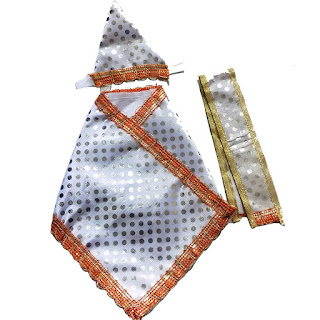Sai Baba of Shirdi, revered as one of the most significant spiritual figures in India, has a profound impact on the lives of millions of devotees worldwide. Known for his teachings that blend Hindu and Muslim beliefs, Sai Baba preached universal love, tolerance, and charity. His life and messages continue to inspire people to live a life of righteousness and compassion. Sai Baba's presence is often invoked through various forms of worship and devotion, such as statues, clothing, and offerings, which hold deep spiritual significance for his followers.

The Sai Murti, or statue of Sai Baba, serves as a focal point for devotion and prayer in many households and temples. These statues come in various sizes and materials, each designed to capture the serene and benevolent presence of Sai Baba. Devotees believe that having a Sai Murti in their home brings peace, prosperity, and protection. The statue is often placed in a dedicated prayer room or altar, where devotees perform daily rituals, including offering flowers, incense, and food. The act of worshipping Sai Murti is seen as a way to connect with the divine and seek blessings.
Among the various materials used to craft Sai Murti, marble is particularly cherished. Sai Baba marble statues are renowned for their pristine white color, which symbolizes purity and divinity. Marble, being a durable and timeless material, is considered ideal for creating sacred artifacts that are meant to last for generations. Artisans meticulously carve the statues, paying close attention to the details of Sai Baba's expressions and posture, which are believed to reflect his divine nature. The cool, smooth texture of marble adds to the spiritual ambiance, making it a popular choice for many devotees.

Dressing the Sai Murti in cloth is an integral part of the devotional practices associated with Sai Baba. These clothes, often made from silk, cotton, or other fine fabrics, are chosen with great care and respect. The act of dressing the statue is not merely a ritualistic procedure but a way to show love and reverence towards Sai Baba. Devotees often change the clothes of the Sai Murti according to festivals, seasons, and special occasions. This practice symbolizes the care and attention one would give to a living deity, reinforcing the personal and intimate relationship devotees share with Sai Baba.
Sai Baba Poshak, or the attire specifically designed for Sai Baba statues, comes in various styles and designs. These poshaks are typically adorned with intricate embroidery, sequins, and beads, enhancing the beauty of the statue and creating a vibrant, festive atmosphere. Each poshak is crafted to fit the statue perfectly, ensuring that Sai Baba is dressed elegantly. Changing the poshak regularly is considered a way to honor Sai Baba and keep the devotional space fresh and inviting. It is believed that a well-dressed Sai Murti brings divine grace and blessings to the household.

CONCLUSION
Sai Baba's teachings and presence continue to inspire and guide millions of devotees worldwide. Through the worship of Sai Murti, the use of Sai Baba marble statues, the careful selection of Sai Baba cloth, and the adornment of Sai Baba poshak, devotees express their deep love and reverence for the saint. These practices not only foster a strong spiritual connection with Sai Baba but also bring a sense of peace, devotion, and divine blessing into their lives.
WEBSITE: https://www.salvusestore.com/sai-idols-dress
ADDRESS: 34/35 Mathura Vihar, Vijay Nagar, Jabalpur (M.P.)
PHONE: +919713099668
EMAIL: [email protected]
PIN: 482002
